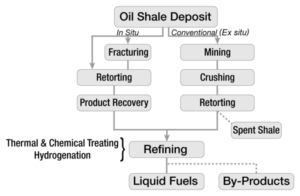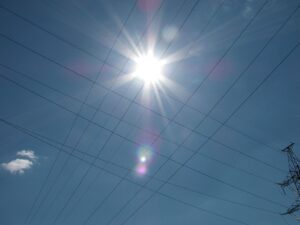
Today transport networks are the essential element of any major city. A huge amount of vehicles causes a reduction in road space, often accidents and traffic jams. Unfortunately, our present traffic systems cannot manage with the increased flows, for example, only the past two decades has seen an 84% increase in the number of cars. This became the main reason for the development of a new approach to traffic monitoring.
The possible solution is the use of distributed acoustic sensing or DAS by fiber optic cable networks. Herewith, it should be mentioned that fiber optic networks suggest two main advantages over other potential smart transport technologies:
- the diffusion of fiber optic cables, to be precise, they cover almost all parts of cities and road infrastructures.
- no need for their installation because fiber cables are already in place. That is why it is not necessary to dig up the streets, install new cameras, or fit point sensors.
- no need for vast spending programs to deploy new technology.
The principle of work is based on the ability of all traffic to generate acoustic or seismic data. In addition, some specific activities, for example, incidents create certain acoustic signatures and these acoustic vibrations pass through fiber optic cables. Thus, distributed acoustic sensing allows interpreting the acoustic information to recognize, determine, and track these signatures for traffic flows and public transport infrastructure monitoring in real-time.
The DAS systems enable to analyze traffic speed and density, detect a traffic jam, and identify disruptions like broken-down vehicles. The most important thing is that the DAS technology opens the opportunity for city authorities to make dynamic adjustments to transport infrastructure that will be necessary to keep cities moving now and in the future.
For example, in the case of an accident or intense level of traffic, the DAS system is able to adapt quickly traffic controls and redirect road traffic to balance overall vehicle flows and avoid a traffic jam. Nevertheless, the whole potential of the DAS technology is not explored yet but at the present time, it is tested in Canada.
The novel distributed acoustic sensing combine monitoring of the public tram system, public road networks, and even autonomous vehicles to create a complete picture of the transport network situation in the city. Then, the obtained information is transmitted into an app for citizens where they can see the road traffic to optimize their own journeys. Finally, it is planned that fiber optic sensing solutions will soon make intelligent transport systems cheaper, with less disruption than alternative approaches.
Optromix is a DAS system manufacturer that provides top of the line distributed acoustic sensing systems suitable for monitoring of transport traffic systems. If you have any questions or would like to buy a DAS system, please contact us at info@optromix.com


 The traditional methods of oil extraction become less and less productive despite growing human needs. Today the main challenge of the oil industry is the development of a new way for oil recovering from unconventional sources. The solution is the extraction of oil or kerogen shales that allow diminishing oil prices.
The traditional methods of oil extraction become less and less productive despite growing human needs. Today the main challenge of the oil industry is the development of a new way for oil recovering from unconventional sources. The solution is the extraction of oil or kerogen shales that allow diminishing oil prices.  Distributed Acoustic Sensing (DAS)
Distributed Acoustic Sensing (DAS) Distributed sensing technology includes
Distributed sensing technology includes  Fiber optic products are progressively being deployed in many upstream and midstream applications. Nowadays fiber optic equipment is regularly used to provide high bandwidth telecommunications and infrastructure for SCADA (Supervisory Control and Data Acquisition) and is being used more and more to sense pressure, temperature, and strain along buried onshore and subsea pipelines and downhole. Pipeline leakage and intrusion detection continue to be a difficult issue because existing leak detection methods and the traditional methods of guarding pipelines have proven inadequate in the prevention of leaks and deferring third-party intrusion into pipelines and plant facilities.
Fiber optic products are progressively being deployed in many upstream and midstream applications. Nowadays fiber optic equipment is regularly used to provide high bandwidth telecommunications and infrastructure for SCADA (Supervisory Control and Data Acquisition) and is being used more and more to sense pressure, temperature, and strain along buried onshore and subsea pipelines and downhole. Pipeline leakage and intrusion detection continue to be a difficult issue because existing leak detection methods and the traditional methods of guarding pipelines have proven inadequate in the prevention of leaks and deferring third-party intrusion into pipelines and plant facilities. Fiber optic products
Fiber optic products Distributed Acoustic Sensing (DAS)
Distributed Acoustic Sensing (DAS) One of the most promising directions in the development of systems for controlling of temperature of high-voltage power lines, fire alarm systems, oil and gas fields, and others are
One of the most promising directions in the development of systems for controlling of temperature of high-voltage power lines, fire alarm systems, oil and gas fields, and others are